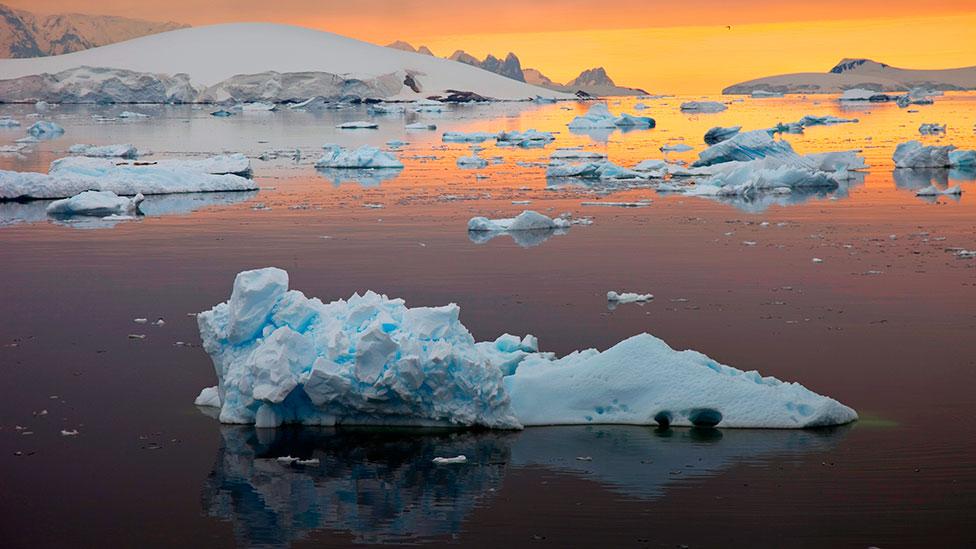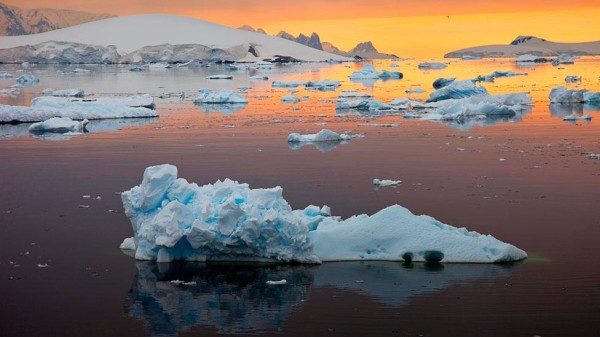
In the latest in her series on phenomena and technologies that may profoundly change the state of our planet, Gaia Vince looks at why our oceans are rising, what the consequences might be and describes efforts to adapt to what may become a drastically reshaped world.
Imagine the seaside was nearer. Not just a little bit nearer, but lapping uncomfortably close to your doorstep and rising. If you’re one of the 10% of the world’s population living in a low-lying coastal area, there’s a chance the ocean might get a little too familiar in the coming decades.
Humanity’s greenhouse gas emissions have been building up in the atmosphere and warming the planet for the past 150 years, dragging us into the uncharted Anthropocene, or age of man. Almost all of the planet’s tropical mountain glaciers have retreated or disappeared in recent decades, including those in the South American Andes, Asian Himalaya, and African Rwenzoris.
The resulting meltwater is finding its way into the oceans. Globally, they are rising at an average of 3.5 millimetres per year – roughly twice the rate seen during the 20th Century. Sea levels are expected to rise by around 2.3 metres (7.6 feet) for every 1C of warming in the coming decades, according to a study published by scientists at the Potsdam Institute for Climate Research last month. Most of the rise in the past decade was thanks to thermal expansion – at higher temperatures the water takes up a greater volume because its molecules move about more. Now however glacial melt has overtaken thermal expansion as the leading cause of rising sea levels.
At the poles, change is underway of a magnitude so extreme that Earth hasn’t experienced its like for over 10 million years. The Arctic is warming at least twice as fast as anywhere else on the planet. One estimate suggests future average global warming of 2-3C, for example, would mean Arctic warming of 6-8C. This is partly because of the hot southerly winds bearing soot pollutants converging on the region. These particles absorb the sun’s rays and when they land on the surface attached to snowflakes they darken it and speed up melting.

Almost all the Arctic glaciers are shrinking. The Greenland ice sheet, the second largest in the world, is losing 200 gigatonnes of ice a year, four times more than a decade ago. In 2011 researchers found that the area occupied by crevasses in one part of the ice sheet had increased by 13% since 1985, speeding its flow into the sea. If the ice sheet melts completely, it would cause a global sea level rise of 7m (23feet). Its melting alongside the Antarctic ice sheet, the largest of all, would clearly be a global transformer of epic proportions.
Climate models predict that the melting of ice sheets in Greenland and Western Antarctica will reach a tipping point after which the rate will suddenly accelerate. This is because meltwater lubricates their faster break-up. Also, being darker than ice and snow, the water now covering a greater proportion of these areas will absorb more of the sun’s heat, speeding up melting even more.
The various models differ on the rate of sea level rise they predict. James Hansen’s group at NASA Goddard predicts a global rise of as much as 25m (82ft) by 2100. More conservative models, such as that of Stefan Rahmsdorf’s group, at the Potsdam Institute in Germany, peg it at 1.4 metres (4.7ft) by the end of the century. That would be enough to inundate low-lying islands like the Maldives, along with many of the world’s major cities. Even Rahmsdorf says that sea level rise of metres rather than centimetres cannot be ruled out if tipping points not included in his model occur.
Atlas redrawn
Many of the world’s greatest cities would become unliveable long before the most extreme sea-level rise occurred. Here’s a world map showing the landmasses most vulnerable to rising seas. As the waters rise, high tides, ocean swell, and storm surges will cause growing numbers of deaths as well as increased property and infrastructure damage.
The oceans are not rising uniformly – the Pacific, for example, will rise by 20% more than average. And while tropical islands disappear, new ones are showing up in the Arctic. Uunartoq Qeqertaq (meaning Warming Island), for example, was born in 2006, the result of the melting of an ice-bridge that formerly connected it to mainland Greenland. Groundwater extraction for fish farms in China’s Yellow River delta may be causing land to sink, with the effect that local sea levels are rising nearly 100 times faster than the global average. The atlases of the Anthropocene will have to be redrawn.
The changes could also lengthen each day by up to two-thirds of a second, because the melting of the ice caps would cause the oceanic mass to shift closer to the equator, increasing inertia and slowing the Earth’s rotation by a fractional amount.
If the ice-sheets melt rapidly – within a few decades – it will be very hard for people to adapt. Current coastal defences would be inadequate to protect our settlements from such high sea-levels. Entire cities would need to move, including power stations, administrative offices, transport hubs and millions of houses and offices. On top of this, agricultural land and water sources would be fouled by seawater incursion, hitting our food supplies. The more developed the coast, the greater the economic loss. This map shows, for example, what the US stands to lose.

People would have to move inland or to higher altitudes. Or, in the case of one New Jersey coastal town, submit plans to lift an entire downtown area several feet above its current elevation. Coastal refugees from the world’s poorest countries, such as Bangladesh and Burma, would seek new homes at the same time as the richest New Yorkers and Shanghainese.
Humans are ingenious, and a variety of creative solutions will no doubt be found, such as stilted tower blocks and floating cities. For example, billionaire Peter Thiel, a co-founder of PayPal, is funding the Seasteading Institute, which hopes to create floating autonomous states. In 2008, the Institute launched a public challenge to create the world’s first independent floating city by 2015. The Poseidon Award will go to the first seastead which houses at least 50 full-time residents, is financially self-sufficient, offers seastead real estate on the open market and is politically autonomous.

Bangladesh is already preparing. Several amphibious floating houses and schools are being built, so people can rise with the waters. Designs produced as part of the Low Income Flood-proof Technology project have light and buoyant foundations made of either plastic bottles, or ferrocement – a combination of cement, sand, water and wire mesh. The houses themselves are made of bamboo. They are capable of rising three feet (almost one metre) from the ground, but the architects say they could be built to be capable of dealing with higher flood levels.




Leave a reply